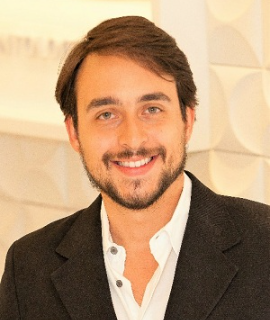Title: Digital workflow in modern implant dentistry
Abstract:
The last few years have brought a technological revolution in Dentistry, computer systems are making everything faster and more accurate. Technology is evolving fast; many modern features have been introduced in the clinical practice and have shown incredible results. The emergence of computerized tomography has revolutionized the image examination by the obtaining a better understanding of the anatomical structures and three-dimensional architecture of the maxillofacial skeleton. Associating the concept of 3D-Printing and CAD/CAM technology it becomes possible to generate prototyped surgical templates with high precision. This technology is based on real images of the bone anatomy obtained through CT scans and the design of a computerized prototyped surgical guide for implant placement. The CT scan images are manipulated on a specific software, enabling a virtual surgery, always looking for the best position, bone anchorage and of course, respecting the future prosthesis that these implants will receive. Guided surgeries are suitable for the most varying types of rehabilitation with implants, including edentulous patients, partial or single unit restorations. This technology has been widely used with scientifically proven success, to succeed with this therapy, achieving optimal aesthetic and functional results, we need a proper planning of the cases. Although it seems to be extremely easy and simple to perform, it requires a lot of expertise and experience of the involved staff, in addition to a detailed planning, avoiding any complications during the procedure. The guided surgery may be considered as a viable alternative for the rehabilitation of edentulous spaces within the correct indications. Connected to the guided surgery, the CAD/CAM technology represents a major revolution within the current context of modern dentistry. It is now possible to generate a virtual model from the direct digital scanning from the mouth, models or even impressions, enabling the design and manufacture of dental protheses by computed process. After the virtual model obtaining, the framework or restoration can be virtually designed on the software. The data is sent to a milling unit, which performs the process of materialize the designed digital project with high precision and a significant reduction of the clinical and laboratorial time. Within the technological advances in implant dentistry it is possible to plan cases virtually, reducing errors and optimizing clinical outcomes. It is even possible to produce computerized surgical guides for faster and less invasive surgeries, accurate prosthetic restorations with high strength and in a great variety of materials. Despite all the advantages and convenience of CAD/CAM systems, the success does not depends only on the technology itself, as it involves several steps. All the involved clinical steps should be carried out seeking the success and the balance between the biological and mechanical factors.




